Read also: Cat behavior: why a cat or kitten behaves very aggressively, bites and attacks the owner for no reason?
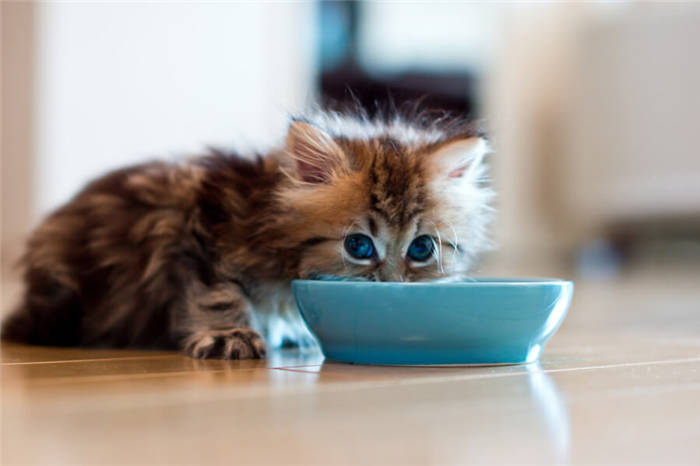
- After how long do kittens stop drinking their mother's milk?
- How often is feeding done
- What the timing of lactation depends on
- Weaning of kittens
- Cat milk supply.
- Mother's milk substitutes
- Feeding Choices
- Can a kitten stay with her mother forever?
- Cat feeding kittens
- About the transition to solid food
- When do I begin complementary feeding?
- Kitten Food: 10 to 12 weeks
- Until what age should kittens be given cow's or goat's milk?
- When is it time to introduce complementary foods, how to accustom babies to solid food?
- Until what age do cats feed their kittens?
After how long do kittens stop drinking their mother's milk?
How long it takes for a cat to feed her kittens with milk is influenced by many factors:
– The number of babies in the litter. One kitten can be nourished for 3 to 4 months by a healthy cat, and sometimes longer (with solid food supplement). If there are 5 to 6 cubs in a litter, the cat can't keep them fed with mother's milk for long periods of time.
– Individual characteristics of the animal.
Some females feed their kittens for quite a long time, letting the calf grow, even when it reaches 5 – 6 months of age. Other animals, after 3 – 4 weeks, and sometimes even earlier, stop feeding their kittens with milk, not allowing them to reach their teats. And some cats refuse the babies altogether.
The duration of feeding is individual and depends on the individual animal. The quality of the lactating mother's diet. How long a cat feeds her kittens is influenced by the nutrition of the animal. A complete diet that provides the necessary nutrients and minerals (especially calcium, taurine, etc.) during the lactation period contributes to a longer lactation and feeding period.
– Mama's health. How long a cat feeds kittens is influenced by the mother's physiological condition at the time of feeding. Diseases of the internal organs, postpartum complications, and the presence of worms and parasites reduce the milking time of the animal and reduce the period of admission to the breast.
On average, a healthy domestic cat feeds kittens for 3 to 4 weeks continuously, during this period, milk is the only source of nutrition for them.
How often is feeding done
Cats, along with other mammals, do not immediately produce full milk. Immediately after delivery, colostrum is secreted from the teats, which is more liquid and does not give the kittens all the necessary substances. With its consumption the cubs form immunity, which makes them resistant to exogenous and endogenous threats. Skipping feeds at this age is especially dangerous: colostrum passing into milk is the only source of vitality for a still blind kitten.
It is impossible to give an unequivocal answer as to how much milk a cat feeds her kittens during this time. The bodies of both mothers and cubs are individual, and the number of "approaches" may differ from the average. Statistical norms are:
Immediately after calving, the owner should ensure that the newborn kittens are in the vicinity of the cat. Until their eyes have opened, they will find their mother's nipples by smell – and crawling to the familiar scent, they may accidentally fall down and die.
Important: The main sign that the animals are healthy is a good appetite for kittens. If the cubs refuse to eat, you can conclude there is a problem with the mother's milk or the condition of the litter. To save the lives of newborns, you need to see a veterinarian.
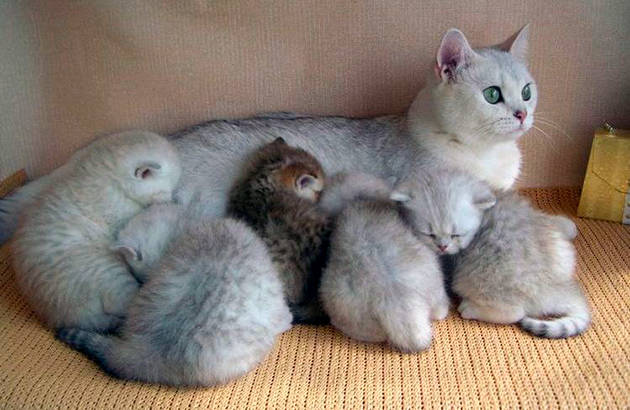
What the timing of lactation depends on
1. The quality of the mother's diet. During the feeding period, the animal eats more, for herself and for the cubs. Just increasing the volume of feed is not enough – its composition must become more balanced, meeting the needs of the nursing body. By getting the necessary micro-nutrients and vitamins the cat will be able to give milk for a long time. If she eats the same diet as before pregnancy, the milk will not last long.
2. The mother's health. During childbirth, especially if they passed with complications, the animal may be psychologically traumatized and not recognize her cubs at all. There may be a refusal to feed in the early periods, up to one or two weeks. In addition, milk production is affected by the condition of the nipples: if they are inflamed, during "approaches" the cat will experience painful sensations and will stop feeding earlier. Parasitic, infectious diseases and injuries affect how long the cat feeds kittens with milk. 3.
3. the number of kittens in the litter. The number of teats allows a mother to feed up to 6 kittens at a time. At the same time the load on the body in "intensive use" increases, and the milk stops coming out sooner. As a rule the cat feeds one or two kittens for a longer time, and the portions they receive in the absence of "competitors" allow the organism to develop more actively.
A cat that gets all the conditions necessary for milk production, that is not frightened by childbirth and does not suffer from diseases, will feed its cubs for about 2-2.5 months. Depending on the conditions listed, this period can be both shortened and extended. Mother feeding in the first month of life is especially important for kittens – after that you can gradually transfer them to complementary feeding.
Weaning of kittens
After kittens have been breastfed for about a month, they will begin to reject their mother. Liquefied kitten food should be offered to kittens while they can still breastfeed from their mother. Over the next 6 weeks, kittens will gradually eat more kitten food and less milk. Kitten food will change from liquid to diluted canned food, to regular canned food, then to moistened pieces of kitten food and finally to solid pieces during weaning until they are ready to leave their mother at 12 weeks of age.

You should limit the amount of time a kitten has to breastfeed the older they get, if they eat on their own. If the kitten eats well on her own, but still wants to breastfeed a lot, you will have to limit the kitten's access to her mother for part of the day.
Cat milk supply.
A cat should produce enough milk for all of her kittens. Cats usually have about five kittens in a litter, but if the cat has an exceptionally large litter, she may need extra nutrition to help her body produce enough milk for the cubs. If you are concerned about your mother cat's nutritional needs, talk to your veterinarian about what you can do. Your veterinarian may recommend a diet for your cat that has more fat and protein to accommodate the added stress of feeding kittens and energy needs during lactation.
In the third or fourth week of lactation, the mother cat is in her most stressful and challenging lactation period. The mother cat's body has been producing milk continuously for about a month, but it will also soon slow down. As kittens begin to reject their mother's milk at this time, they will need less milk.
Mother's milk substitutes
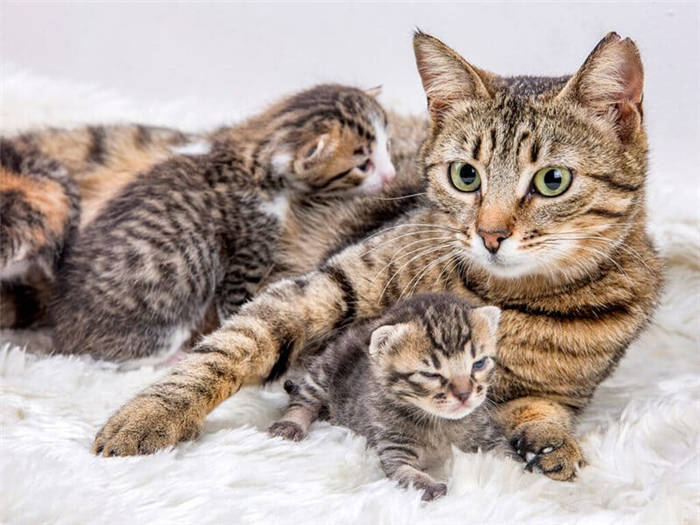
Feeding a newborn kitten without a cat can be done with special substitutes. Every owner of a pregnant cat should familiarize himself in advance with the types of cat milk substitutes and be prepared, if necessary, to supplement the babies.
The milk of a lactating cat has practically no difference in its basic composition from other types. The difference lies in the ratio of substances. For example, cat milk has about 70% water and 11% of fat content. It means that cat milk is much less fatty than human, goat and even more so cow milk.
The protein content of normal cat milk is also about 12%, but lactose is no more than 3%. Each type of milk, no matter whose it is, is suitable for a particular animal.
It is not possible to completely replace cat milk with other dairy products, but in some cases it is necessary. Thus, a cat milk substitute must have in its composition vitamin and mineral complexes, as well as the amino acid taurine and polyunsaturated fatty acids.
For artificial feeding of kittens special mixes are produced by companies that produce granular ready-made foods. They differ from each other in quality and useful elements. Often professional breeders use the following brands for feeding kittens:
The cost of real cat milk substitutes is quite high, so some owners wonder what can replace the dry mixture. Veterinary experts do not advise doing it yourself, but in some cases you can use simple recipes.
Cat's milk can be replaced with quality condensed milk of 20%, which does not contain water or sugar. For 2 week old kittens, you can mix condensed milk with meat and bone meal. For older babies, you can mix whole cow's milk with the yolk of a chicken egg with added sugar. Vitamin drops are also added to this mixture. For the exact dosage, it is recommended to consult a veterinarian. З
Feeding Choices
By carefully understanding the nuances regarding artificial feeding of small kittens, the owner will be able to cope with this task with great success. It is very important to monitor the reaction of the newborn and slightly older baby.
A hungry kitten nervously squeaks, shows extreme dissatisfaction and intuitively searches for the mother's nipple. Such kittens are fed based on certain norms. An approximate feeding schedule for kittens is as follows:
- Up to 14 days old, kittens should be fed on average 8 times a day (with no overnight break);
- From 14 days to 1 month, kittens should be fed at least 6 times a day;
- After one month of artificial feeding gradually add solid food and give food five times a day in small portions.
The amount of food depends on the individual characteristics of the little pet, its condition and breed. On average, babies at the age of 1 week are recommended to give 30 ml of milk per 100 grams of live weight. After another week, the amount of food increases from 35 to 45 ml per 100 grams of weight. At four weeks of age, there are about 50 ml of milk for every 100 grams of kitten's body weight.
At two months of age, kittens are quite capable of eating from a bowl on their own, but they need to be taught to do so. Rarely does a little kitty immediately understand what to do with the liquid, which is poured into a flat bowl. You need to wait until the baby himself understands that his food is in the bowl.
You can try adding some meat with grated vegetables. If the owner prefers to feed kittens dry food, it is important to choose a quality pelleted food beforehand and pour a little of it into the bowl. Due to the taste of dry food, kittens have no problem getting used to it and eat it without additional effort on the part of the owner.
When transferring a small kitten to an adult food, the owner should remember that most of the products allowed for adult cats are forbidden to babies. Kittens should not be given legumes, corn and broccoli cabbage – they lead to increased gas and can cause obstruction.
Can a kitten stay with her mother forever?
The answer to this question is both yes and no. In the wild, a kitten stays with her mother until she is old enough and independent enough to fend for herself. However, if a kitten is born in captivity, she may stay with her mother indefinitely.
The main reason a kitten stays with her mother is for protection and food. The mother cat will protect her kittens from predators and teach them how to hunt and survive. In addition, the mother cat will feed her kittens until they are old enough to eat solid food.
However, there are times when a kitten may be separated from her mother. If a kitten is born with a medical condition that requires special care, it may be necessary to separate her from her mother in order to provide her with the necessary treatment. Also, if the kitten is growing up in a home with other pets, it may need to be isolated from its mother to prevent fighting and aggression.
Cat feeding kittens
The owner's job is to monitor the kitten's nursing process, behavior, and condition. This will allow you to detect a lack of milk in time and properly organize the complementary feeding. It is advisable to contact a qualified veterinarian who will help diagnose possible problems and make recommendations on how to fix them.
Once a cat's milk deficiency is detected, it is necessary to immediately begin supplementation of the kittens. Kittens' metabolic processes are extremely fast, and malnutrition will have a negative effect on their condition in the first days.
If a cat does not feed her offspring, special formula must be taken care of. Whole cow's milk is not recommended for supplementation. It is too fatty and is not absorbed by the kittens in the right amount. In addition, there is the risk of digestive disorders.
Cat's milk can be replaced by whole fresh goat's milk or formula intended for supplementary feeding of puppies. Breeders use baby formula for artificial feeding of kittens, only they need to be pre-diluted in the proportion of 1:1.5, as the concentration for a human baby is not suitable for kittens.
- warm the formula to 38 degrees before feeding;
- do not store ready-made formula for more than 4 hours;
- keep bottles and nipples clean (to prevent dangerous infections);
- feed after the mother's nipple suckling process.
Weak kittens have a poor sucking reflex, it is difficult for them to get their own milk. It is advisable to put the babies on the last pair of milk pouches of the cat, since there is always more milk in them. Be sure to weigh the kittens regularly to determine weight gain.
When feeding orphaned kittens, motherless kittens or those that the cat refused to feed, the owner should follow basic rules:
It is necessary to closely monitor the condition of the babies, give regular tummy massages to normalize the digestive tract. It is important to consult a veterinarian about changes in the condition of the animals.
About the transition to solid food
Newborn kittens get their first nutrients from colostrum, the cat's first born milk. Colostrum contains large amounts of specific immunoglobulins that stimulate the body's defenses. Normally cats feed their babies under normal conditions up to 1.5 to 2 months of age. But, from as early as 4 weeks of age, you can try adding solid adult food to the milk diet.
By the time the cat stops feeding the kittens, they should already be ready to feed themselves. It is recommended to choose high-quality wet food with a balanced composition, enriched with vitamin and mineral complexes, necessary at a certain period for growth and development.
Solid food for kittens should obligatory contain polyunsaturated fatty acids – Omega-3 and Omega-6 for normal development of the brain, nervous system and eyesight, as well as phosphorus and calcium for bone development.
When kittens reach the age of 2 months, solid dry food prevails in the animal's diet, completely replacing the mother's milk. This period is the most dangerous because the kitten's body is susceptible to various kinds of infections, due to the lack of normal immune defense.
Then the diet is dry pelleted food or natural food, depending on what the owner of the animal chooses to eat.
With a natural diet, the kitten's diet should be chosen in the most balanced way, and only high-quality meat of non-fatty varieties (poultry, rabbit), vegetables and cereals are used in the preparation process. It is not desirable to give small kittens fish, especially fresh and river fish.
It can provoke not only irritation of the digestive tract, but also cause serious helminth infections. Saltwater fish contains a large amount of phosphorus, which is also not desirable for the developing young body and can provoke the development of urolithiasis.
When do I begin complementary feeding?
As soon as the mother's milk begins to decrease (after about three to four weeks), the kitten should gradually get used to the new food. From the third month, young animals will eat only kitten food or pieces of food. To get them used to solid food, give them small portions. If they refuse to eat, more milk can be added the first few times to increase intake. However, the amount of farm-raised milk in the kitten food should be quickly reduced so that the kitten does not absorb more calories than she needs.
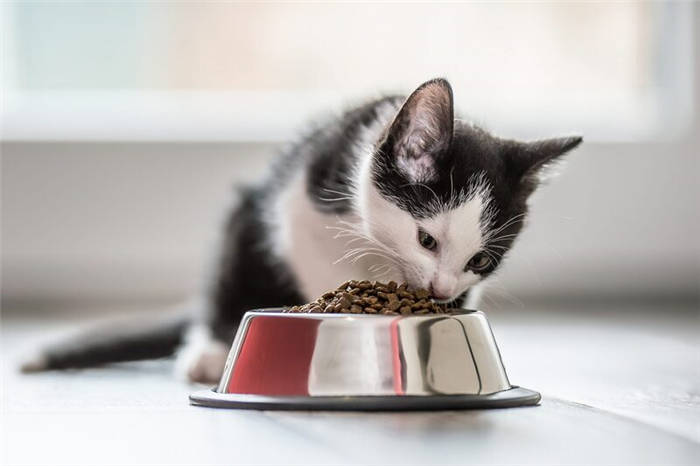
Kittens are in the care of their mother after birth, eating only her milk until they are four weeks old. It contains a lot of protein and calcium – ingredients that strengthen and strengthen their bones. Therefore, kittens should not be fed any other food additionally for the first month. If they are orphans, they should be given a special formula to replace mother's milk. This liquid is administered using a bottle with a teat. It is important to note that kittens should never be given cow's milk, which has too little protein and too much sugar, which can negatively affect their development.
After the first month you can start feeding kittens. It is important to do this gradually, introducing small amounts of food. It is a good idea to serve it from the beginning in a bowl so that the cat learns good habits. Over time, in addition to wet food, you can serve him some dry food.
Cats that are about 3 months old can already eat classic cat food in the form of dry food or meat. It is important that the foods introduced are of good quality and contain vitamins and essential minerals.
Kitten Food: 10 to 12 weeks
Above we learned when you can start feeding kittens, now let's learn more about how to do it. In the first weeks of life, the kitten is in the fertilization phase. It's time to introduce him to different feeding methods, such as wet kitten food and homemade food, so he doesn't get used to just one type of food. So if you need to change the cat's diet later for health reasons, the transition will be easier. Make sure you provide him with the vitamins and minerals he needs to grow. A quality kitten food fully covers this need.
During this period the feeding method must be adapted to the kitten's anatomy: the kitten's digestive tract is not yet fully developed, but his hunger is not diminished. Therefore, they need many small regular meals throughout the day. Meal times should always be the same. In the wild, a cat eats 20 small meals throughout the day and night. Ideally, fill your cat's feeder just before bedtime so that she will have food when you sleep.
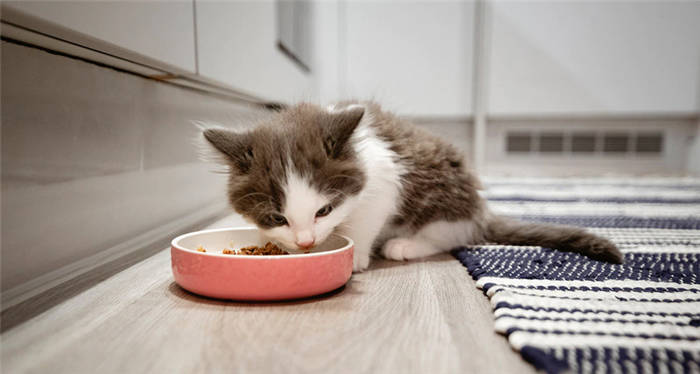
Until what age should kittens be given cow's or goat's milk?
Until at least 2 months of age, mother's milk is the main food for kittens. If, for any reason, the cat refuses to feed the cubs, it is up to the cat's owner to solve the problem. Cow's or goat's milk is often used to artificially feed the babies. These foods are useful, but are digested by kittens up to a certain age. As they get older, the production of lactase, which is responsible for digesting milk sugar, decreases in their bodies.
Read also: How to determine at home how many weeks or months a kitten is, up to what age is a cat not considered an adult?
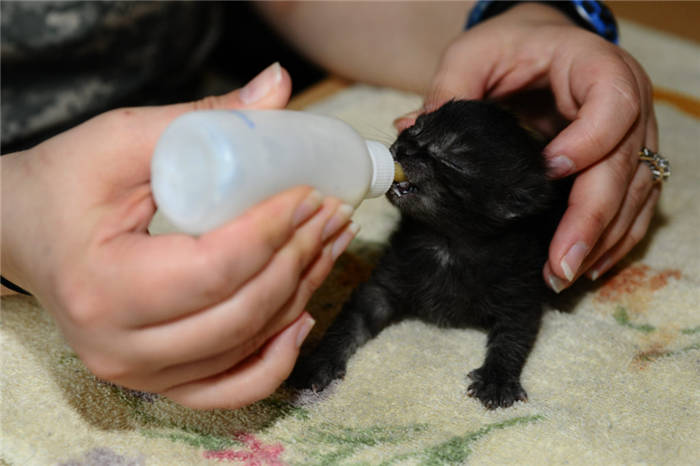
The digestive system produces more and more protease, an enzyme needed to break down proteins. The older the animal, the worse it digests lactose, which means it stops digesting milk. It often provokes them digestive disorders (pain and bloating, flatulence, vomiting, diarrhea). But this is not always the case, and some pets, even at an advanced age, can happily lick milk without any adverse effects.
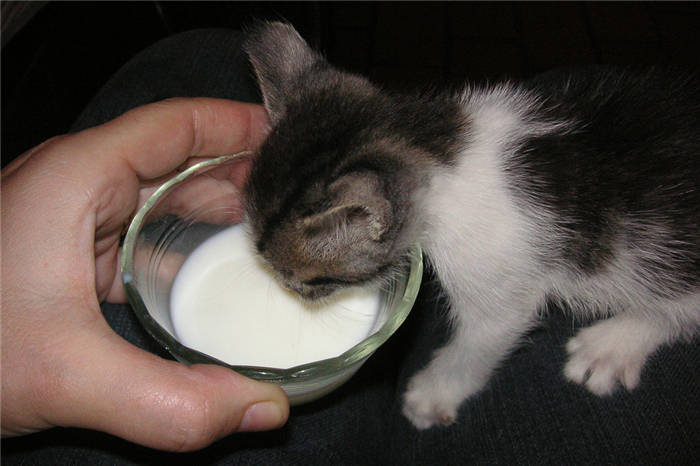
Veterinarians disagree about the age until which small pets can be fed milk. Some believe that it should be excluded from the cat's diet from the age of six months, while others are convinced that after 4 months it is of no benefit to the animal. This point can be determined by experience. As soon as a cat shows typical signs of poor digestibility after feeding milk, you should remove the food from its ration.
When is it time to introduce complementary foods, how to accustom babies to solid food?
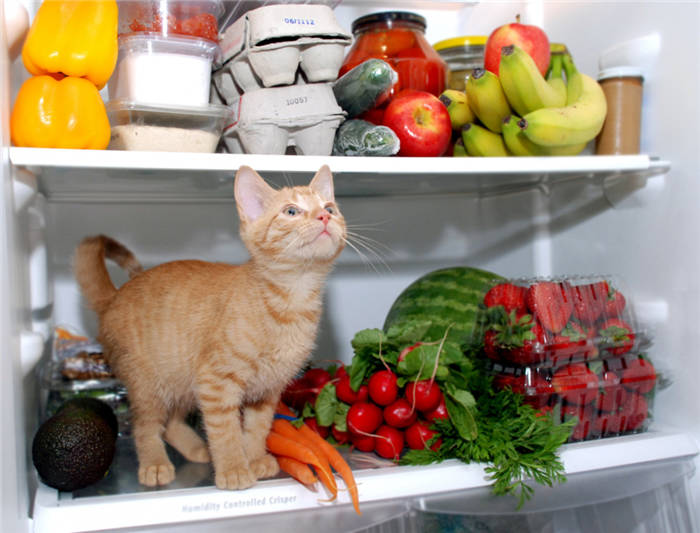
You should not start feeding kittens until they are 3-4 weeks old, which is the optimal time for them to be introduced to solid food. Usually by this age they start to help themselves to food from their mother's bowl. When pets reach one month of age they do not need only mother's milk for normal development and growth, besides, at the same time their lactose digestion enzyme production is reduced.

Young pets should be accustomed to solid food gradually. At first the porridges should be very liquid. After a few days the amount of liquid should be reduced by adding more grits. When deciding to give meat to the kitten, at first a small amount of boiled fillets, e.g. chicken, should be added to the broth. Gradually its amount can be increased.
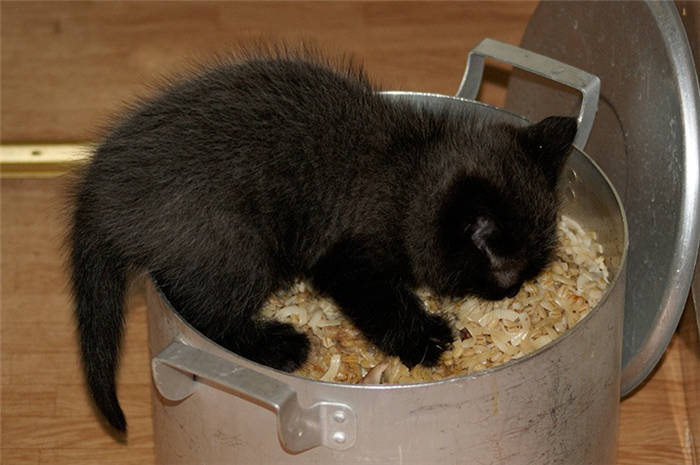
It is more difficult to teach the crumb to eat dishes with pieces of vegetables or meat. The shallower they are, the faster the baby will start to eat them. If the pet eats only liquid and leaves the meat pieces in the bowl, you should grind them in a blender at least once. Subsequently, the kitty will purposely look for meat even in the bowl with the porridge.
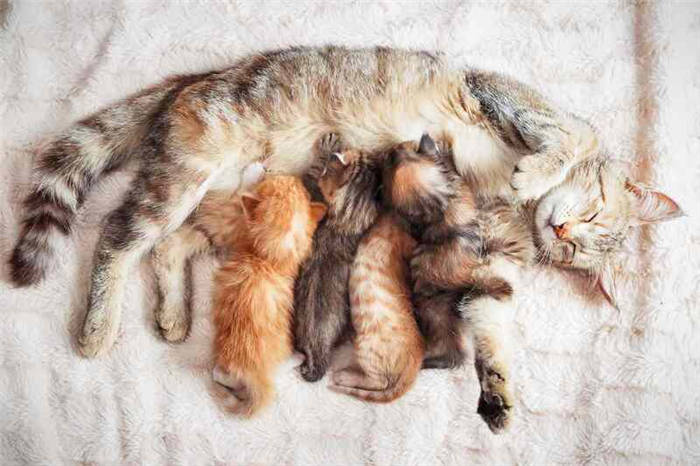
Kittens copy their mother in everything, so you usually do not have to make special efforts to accustom them to solid food. It is enough to bring the baby to the bowl – and he will understand what is required of him.
Until what age do cats feed their kittens?
My cat is 5 years old and my kitten is 8 months old, but he still can't get over sucking the cat's milk. The cat hisses at him sometimes, it must be painful for him to get his claws into her belly from pleasure. Maybe we should start weaning him.
My cat used to feed until the last one was given away, once a kitten was left until she was four months old, she would occasionally feed him.
In most cases, cats stop feeding their kittens milk between the eighth and twelfth week of their lives.
From one to two months old. And you should have weaned him a long time ago. You may have a problem with it now. The habit is probably already formed.
No, there is no need to interfere. The cat will wean him. Cats lose their maternal instinct. Each one is different. They start hissing at kittens, sometimes hitting … not let them near themselves in general. Then it happens that in 2-3 years they will let this same kitten (an adult) to themselves. ) Such funny ))
The cat itself will drive it when she got tired of feeding him, as was the case with our cat, who lived in the village at his grandmother. )
When our cat had kittens (and they were her first and last babies – then we spayed her), we had one kitten. He suckled on her for 3 years, even when there was no milk anymore. Apparently, just as a pacifier. And the cat just put up with it, and just purred sometimes.
Look at the video. Pekingese never had puppies, but she nursed kittens. Two grew up and stayed with the family. Blackjack is still a "mama's boy."
Remove the space and the asterisk.






